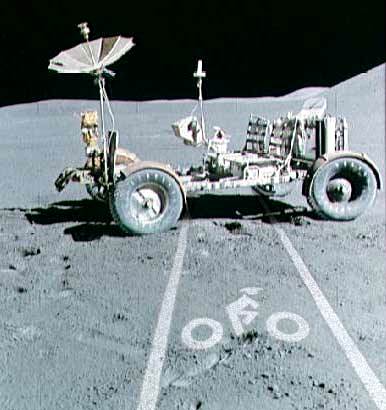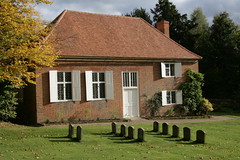
A couple of weeks ago, on my trip to Stanmore, I ended up following some of the cycle routes in North London. For many of these, they have marked off a fairly wide strip of the main road, and designated it as a cycle lane.
In theory that seems like a good idea, but in practice it wasn't a very comfortable experience. That's largely because of the number of cars that were parked in the cycle lane. They regularly forced me to execute a tricky manouvre in order to switch from the cycle lane into the main carriageway.
As it was a Sunday, the traffic wasn't too heavy, but any cars on the road were still moving fairly quickly. On a weekday I imagine it would be busier, but perhaps there are fewer parked cars.
The Department for Transport recognises the problem. Their "
Manual for Streets" says "
Cyclists should be catered for on the road if at all practicable. If cycle lanes are installed, measures should be taken to prevent them from being blocked by parked vehicles."
I hadn't paid much attention to cycle lanes before, because the ones near home are few and far between, and they are only narrow. They are not quite as narrow as this one in Liverpool that the
Warrington Cycle Campaign has (rightly) singled out for public humiliation. But they are narrow enough to be pretty irrelevant.
Being offered a broad cycle lane that was then being used as a car park was much more annoying. I couldn't stay in the cycle lane, because there were so many parked cars. If I stayed outside the parked cars I was blocking one of the two lanes that were left for cars to use, and if I swerved in and out of the gaps I was repeatedly at risk of losing an argument with something big and heavy and fast.
At the time I imagined that urban cyclists must have mastered some mysterious technique that we humble country folk from the Thames valley know nothing of.
Having read what John Franklin says in
Cyclecraft I have come to a different conclusion. He says "
narrow lanes... .have led to some very difficult conditions for cycling". Quite apart from the problem of obstructions, he points out that they restrict the movements of cyclists, encourage cyclists to ride too far to the left, and few cycle lanes allow for correct positioning at junctions. They are mis-interpreted by motorists, encouraging them to overtake cyclists too closely, and they lead to resentment and hostility when cyclists have to ride outside the lane.
I'm paraphrasing here, but as far as I can see, he basically recommends that cyclists ignore cycle lanes. We should ride where we believe it is safest to ride, while watching out for motorists mis-reading our position.
As usual with his advice, that seems to make a lot of sense.
I'm still not sure about condemning cycle lanes though. For myself I am getting more confident about chosing and signalling my position and intended direction, so I'm more comfortable about sharing the road with cars than I used to be. But it has taken me a couple of years and quite a lot of miles to get to this level of confidence. A bit of help separating cyclists and cars doesn't seem like such a bad idea. I certainly don't want to blame the road engineers who put in nice wide cycle lanes. It's the idiots who park in them (and, for that matter, on pavements) who really get my dander up.


 The examples posted here are getting increasingly absurd, but they are certaibly amusing.
The examples posted here are getting increasingly absurd, but they are certaibly amusing.  Last week I was talking with someone about a town in Poland, which he described as "very nice, but there's no reason for anyone to visit". He left me curious to go and have a look.
Last week I was talking with someone about a town in Poland, which he described as "very nice, but there's no reason for anyone to visit". He left me curious to go and have a look.


 A couple of weeks ago, on my trip to Stanmore, I ended up following some of the cycle routes in North London. For many of these, they have marked off a fairly wide strip of the main road, and designated it as a cycle lane.
A couple of weeks ago, on my trip to Stanmore, I ended up following some of the cycle routes in North London. For many of these, they have marked off a fairly wide strip of the main road, and designated it as a cycle lane.